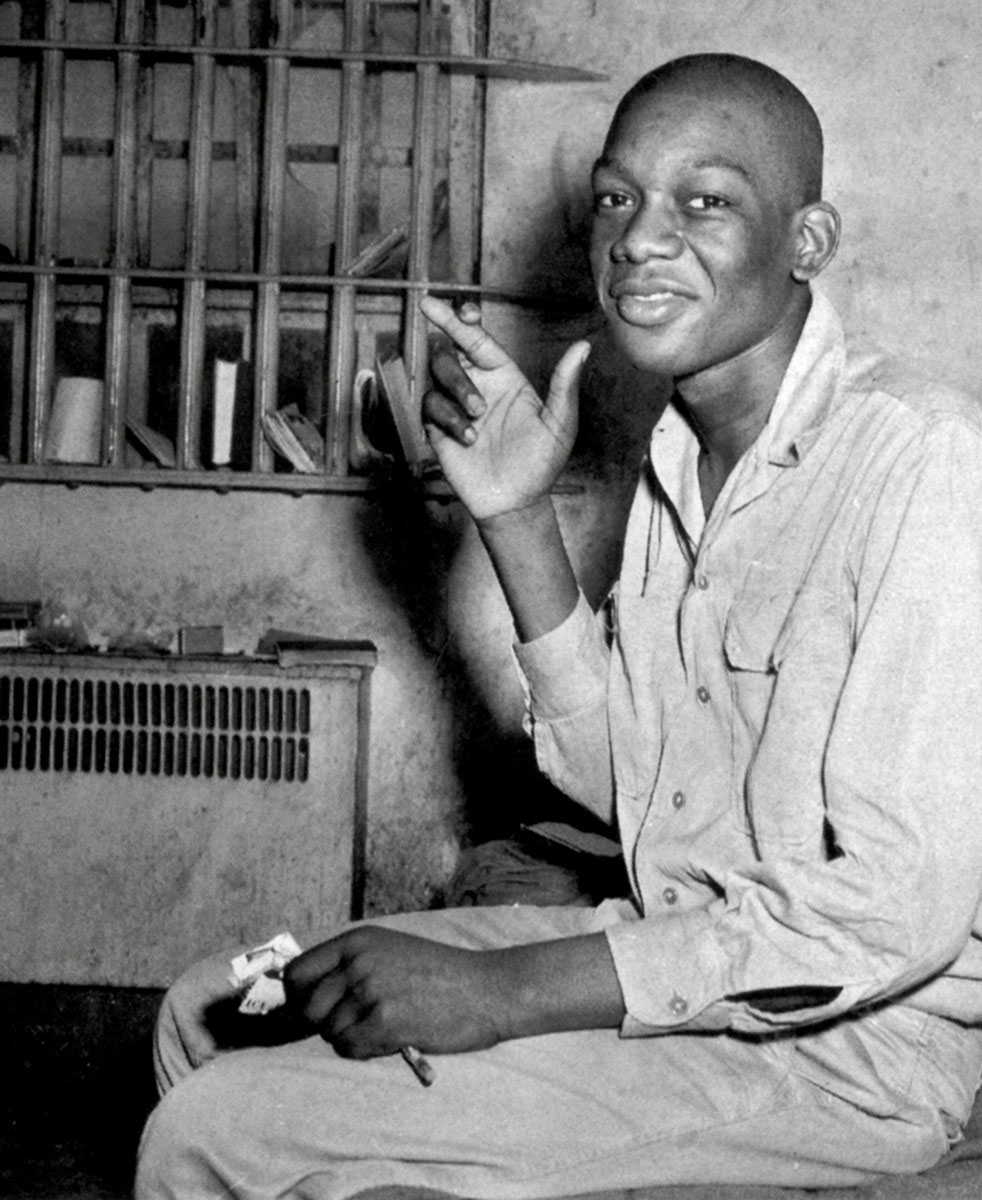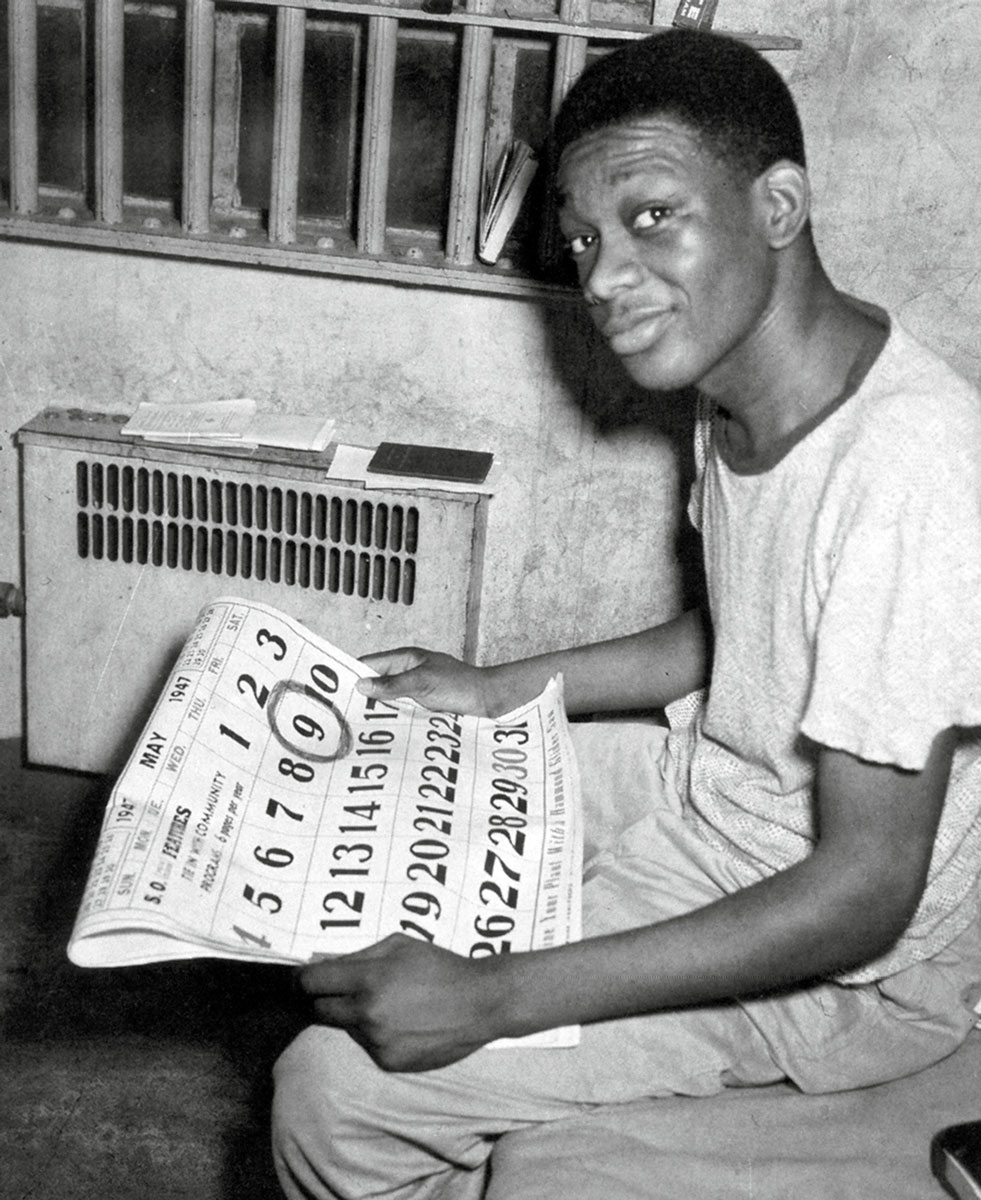A Close Shave with Death
The double electrocution of Willie Francis
Mats Bigert
“I’m n-n-not dying” were the words coming out from under the leather hood during the electrocution of Willie Francis on 3 May 1946. “Gruesome Gertie,” the electric chair used for executions throughout the Louisiana prison system, had malfunctioned and failed to produce a current strong enough for a lethal shock. The botched execution was terminated and Francis, who had been convicted of murdering a former employer, survived.
The photographs reproduced here, both of which were taken after the attempted execution, reveal one important procedure related to electrocution—being shaved. A hairless head and left calf are imperative for the effectiveness of the electric chair, the top of which is usually fitted with a tight cap containing a brass electrode and a sponge moistened with saline solution. It is through this electrode that the current—2,500 volts in the case of Francis—is introduced into the subject’s body. It then travels through the trunk and exits though the electrode attached to the left leg, causing heart failure and cardiac arrest. If the body parts connected to the electrodes are not shaved properly, the resistance that the hair contributes to the circuit can prolong the time between when the current is switched on and life is switched off. It seems unlikely that hair played a role in the failure of Francis’s electrocution: it is known that an inmate-barber shaved him on the day of his scheduled execution, and documents from the subsequent hearings in fact focus primarily on whether the botched attempt was due to simple mechanical failure or to the fact that the two executioners were intoxicated.
His case was finally brought before the US Supreme Court, with his lawyers claiming that Francis had already been executed, even if the procedure had failed to kill him. The argument was rejected and Francis was sent back to the electric chair a year later. On 9 May 1947, Francis was shaved for the last time.


Mats Bigert is an editor-at-large of Cabinet, and one half of the Swedish artist duo Bigert & Bergström.
Spotted an error? Email us at corrections at cabinetmagazine dot org.
If you’ve enjoyed the free articles that we offer on our site, please consider subscribing to our nonprofit magazine. You get twelve online issues and unlimited access to all our archives.